
My research is based on the area I grew up in, at the most easterly point in the British Isles. As I now live over two hundred miles away, the COVID-19 pandemic has certainly made this challenging. Due to restrictions, I was unable to travel to the area for the first few months of my study, and instead had to rely on Google Maps, reading and online research.
After completing my MA in Poetry at Manchester Met two years ago, I decided I wanted to carry on and study for a PhD. Almost forty years after my Fine Art degree, I discovered that I love writing and researching. Manchester Met’s Centre for Place Writing felt like a perfect fit for my proposal.
As a Creative-Critical PhD, my work explores and experiments with different ways of writing about place. My core question concerns what it means to be an ‘Easterner’ and what, if any, qualities are unique to people living in this region. The North/South divide of the country is often raised in relation to socio-economic and political debates, but East and West are rarely mentioned. Lowestoft, where I was born, has suffered from the decline of its fishing trade since the 1970s, and climate change has caused erosion to the coastline. Like many British seaside towns, there are additional issues of poverty and unemployment. Parts of the Old Town and High Street have been awarded Heritage Status, and local plans for redevelopment and regeneration are under way.
One of the things that has helped me to stay focused on my research is to understand what sort of a learner I am, and to take advantage of the strengths in my methods. I like gathering threads of information from a variety of sources and attempting to bring them together. I often find myself disappearing down rabbit holes, following trails prompted by a line in a text, a photograph, or a particular detail. This might lead me to researching obscure papers, biographies, journal entries from artists or writers, or accounts of events in local newspapers.
Hours can disappear as I zoom into tiny features on online maps. In the early stages of a PhD, it is hard to tell what will turn out to be useful material, so I have allowed myself to read widely and follow my interests, wandering into territory that may or may not be directly relevant to my PhD question. Curiosity is a good quality to cultivate when studying for a PhD. It seems important not to narrow down the focus too quickly, when I am not yet sure what is out there to be discovered; what will spark my imagination. One of the first books I read as part of my research into the East Coast included information about prehistoric archaeological finds along the shoreline, so I enrolled on a short archaeology course to find out more. Unexpected links between fragments of information are where the magic lies for me – past, present, and future overlay each other and stories intertwine in a way that is outside time, creating a multi-layered mapping of place. Exploring what we mean by the term ‘place’, our relationship to it, and how this affects our identity, all form part of these layers.
My research in Creative-Critical Place Writing will add to the growing field of Place Writing studies, particularly focusing on seaside and coastal towns. Still a relatively new genre, the scope of what is possible, how we define the meaning of place and our relationship to it, is constantly expanding. Writing from the perspective of an older woman from a working-class background, issues of gender, class and age, which are currently under-represented in this sphere, inform and underpin my writing.
The Research Support Award allowed me to travel to Lowestoft, Suffolk, where I collected research materials and visited specific sites in person. After almost a year of virtual study, I was finally able to walk the routes I had been writing about and to fully experience being there with all my senses. The trip challenged my preconceptions and memories of the town, as I witnessed how the area has changed in both positive and negative ways. I felt a strange mixture of belonging/not belonging while I was there, which may be familiar to others who have returned to their home town after many years of living elsewhere. I made a lot of discoveries simply from walking every day: along the shore, through the streets, up and down the old Scores that link the old Beach Village with the historic High Street. It was over two years since I previously visited, and I wanted to view the resort as a tourist, travelling on foot from one end of the town to the other, making notes and observations, taking photographs. Reaching Lowestoft Ness, close to my birthplace, and briefly being the most easterly person in the British Isles on land, was an exhilarating feeling. Swimming in the North Sea took me even further east.
On the last day of my trip, I discovered on Facebook that the artist Banksy had painted four new murals in the town. I use lots of visual imagery in my writing, so this was exciting news and has provided unexpected inspiration for my studies. Places are constantly changing and being reinvented in surprising ways. I arrived home in Yorkshire with sand in my suitcase, genuine evidence of having been at the seaside.
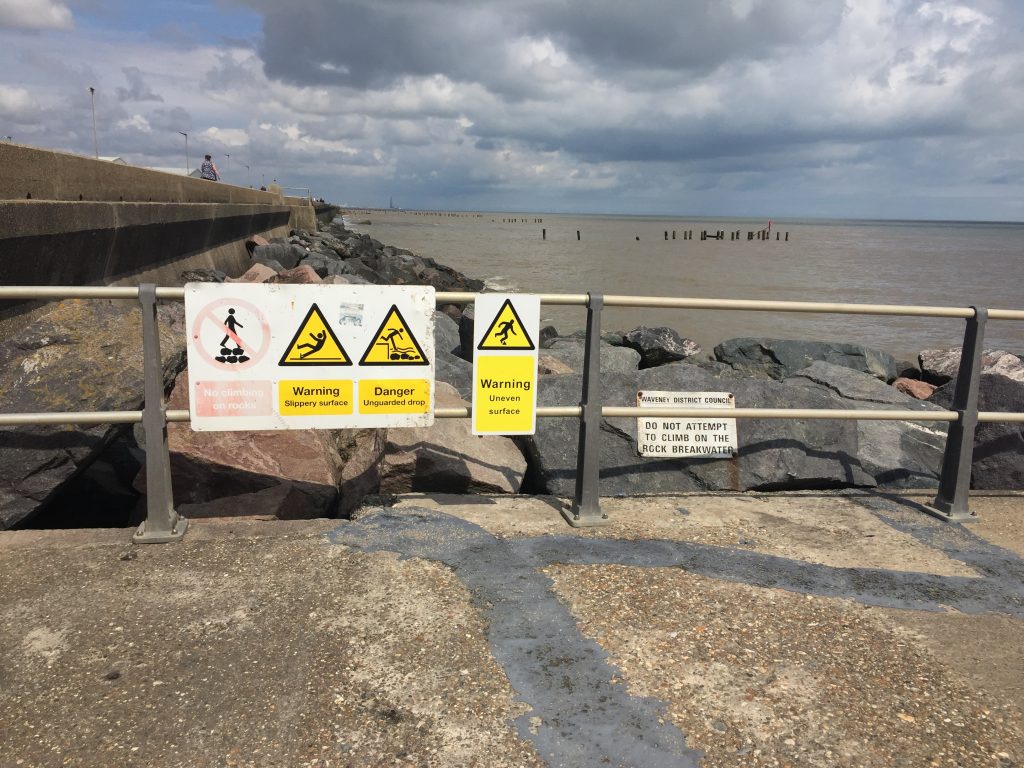
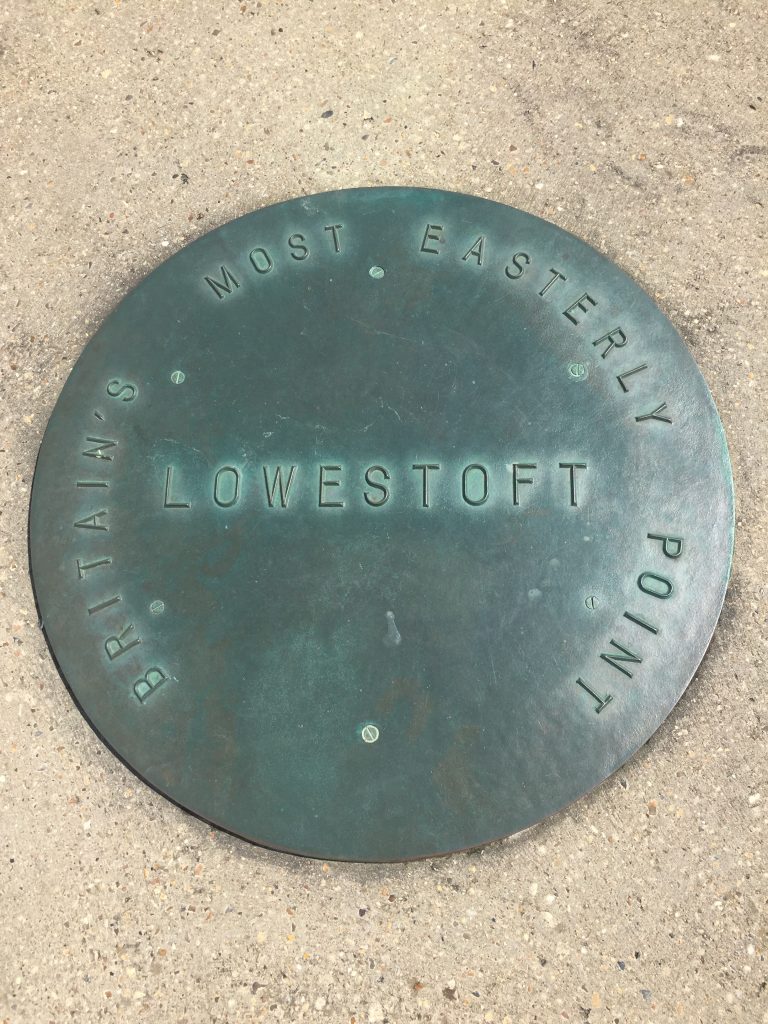
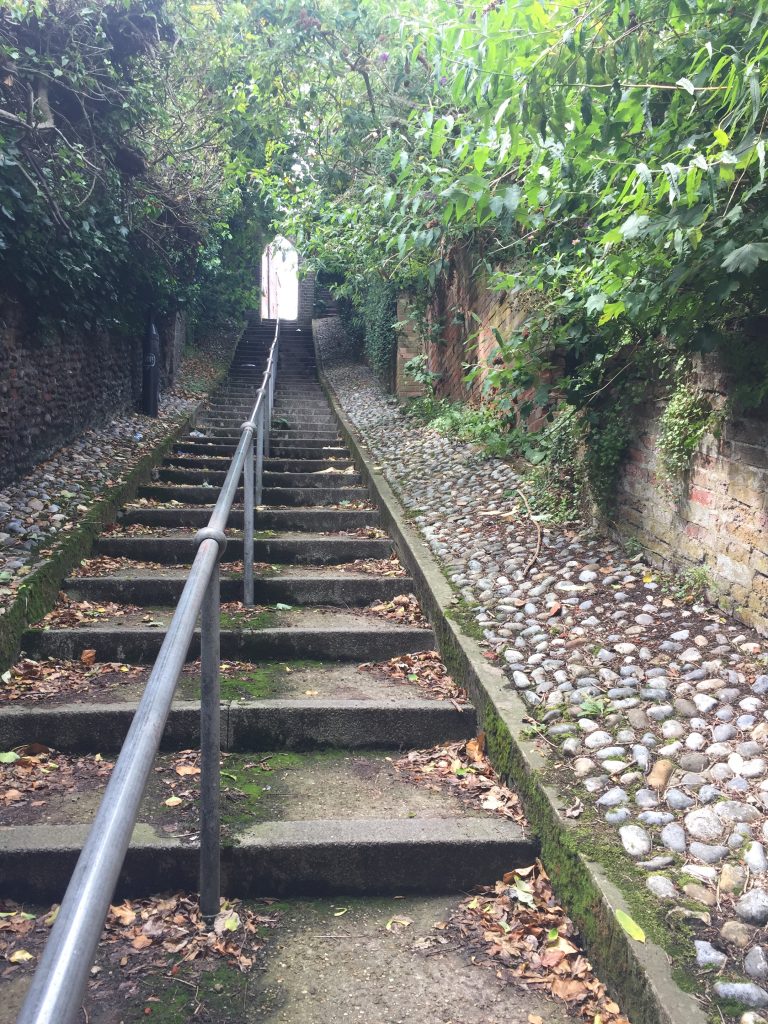
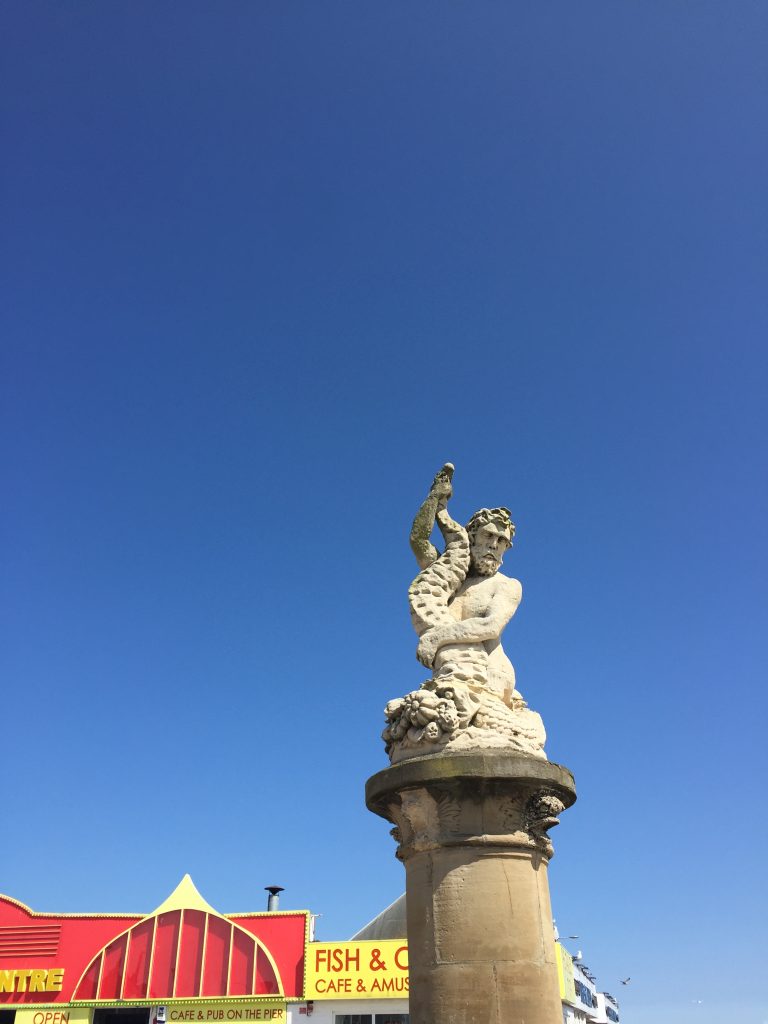
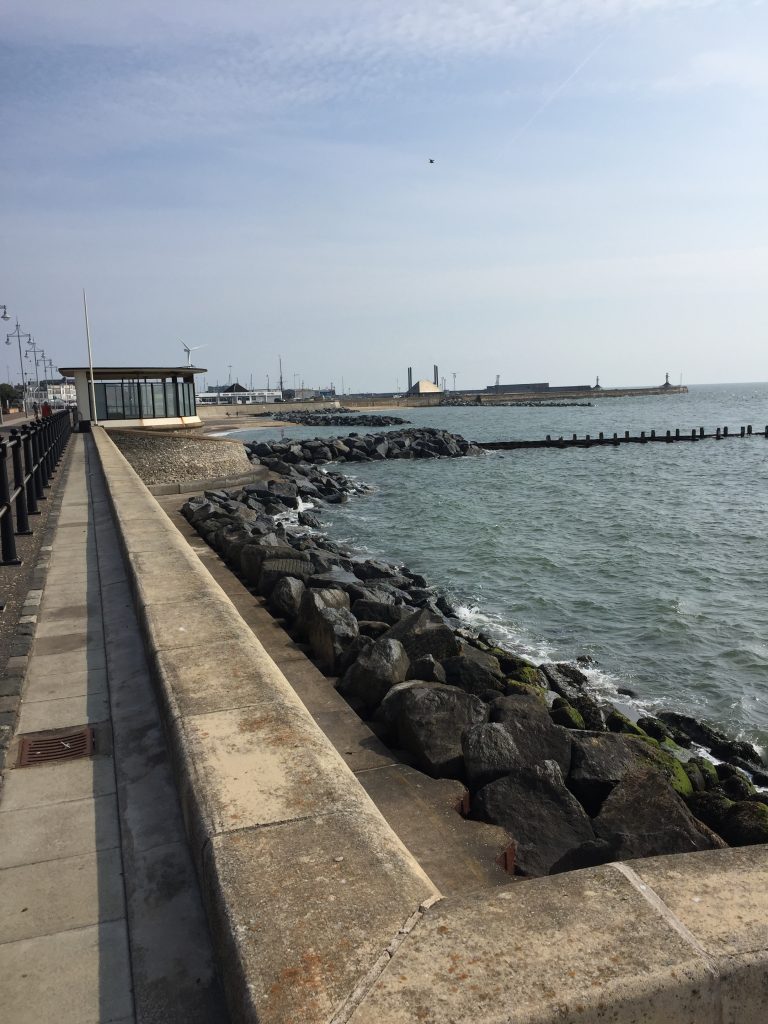
Sally was funded through the Manchester Metropolitan Graduate School’s Research Support Award to complete this fieldwork. You can find out more about the award and upcoming deadlines by visiting the PGR Development Moodle area.


